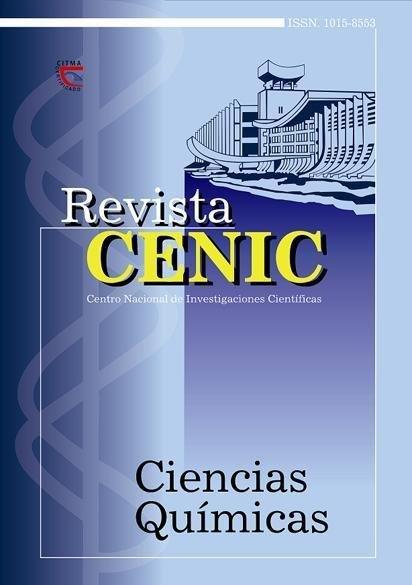1H-NMR Spectroscopy Study of Oleic Acid and Methyl Oleate Ozonation in different reaction conditions
Abstract
Reactions of ozone with oleic acid or methyl oleate were carried out in presence of hexane, carbon tetrachloride, ethanol or water.
All the reaction mixtures were studied by 'H - Nuclear Magnetic Resonance Spectroscopy ('H-NMR) . Differences in the composition of the reaction mixture of the samples by IH-NMR analysis were found. During the ozonation of oleic acid, the acyl-oxy-alquil hydroperoxides were formed as major products in all the studied conditions, Nevertheless, during ozonation of methyl oleate, a striking dependence of reaction products with the solvent or additive used was found. In hexane, the corresponding ozonides/oligomers were obtained, whereas when ethanol is present, the ethoxy-hydroperoxides were the major products . The analysis in the presence of water only reveals the aldehyde and ozonides/oligomers signals. These results are discussed taking into account the Criegee mechanism, the characteristic of the bubbling reactor employed, and some properties of the solvents or additives used.

Downloads
Published
How to Cite
Issue
Section
License
Copyright (c) 2003 Copyright (c) 2003 Revista CENIC Ciencias Químicas

This work is licensed under a Creative Commons Attribution-NonCommercial-ShareAlike 4.0 International License.
Los autores que publican en esta revista están de acuerdo con los siguientes términos:
Los autores conservan los derechos de autor y garantizan a la revista el derecho de ser la primera publicación del trabajo al igual que licenciado bajo una Creative Commons Atribución-NoComercial-CompartirIgual 4.0 que permite a otros compartir el trabajo con un reconocimiento de la autoría del trabajo y la publicación inicial en esta revista.
Los autores pueden establecer por separado acuerdos adicionales para la distribución no exclusiva de la versión de la obra publicada en la revista (por ejemplo, situarlo en un repositorio institucional o publicarlo en un libro), con un reconocimiento de su publicación inicial en esta revista.
Se permite y se anima a los autores a difundir sus trabajos electrónicamente (por ejemplo, en repositorios institucionales o en su propio sitio web) antes y durante el proceso de envío, ya que puede dar lugar a intercambios productivos, así como a una citación más temprana y mayor de los trabajos publicados (Véase The Effect of Open Access) (en inglés).













